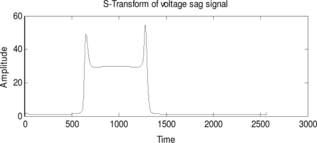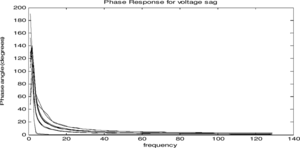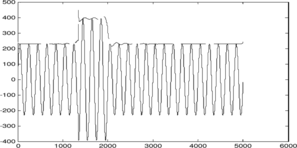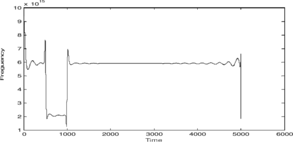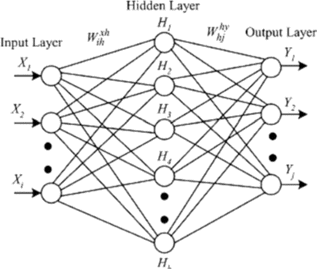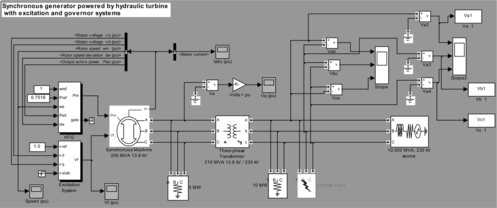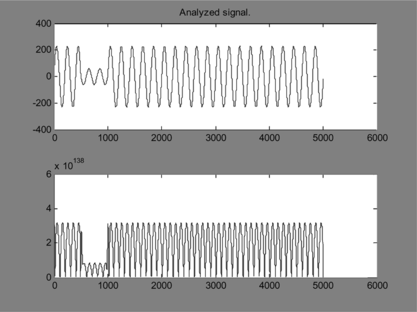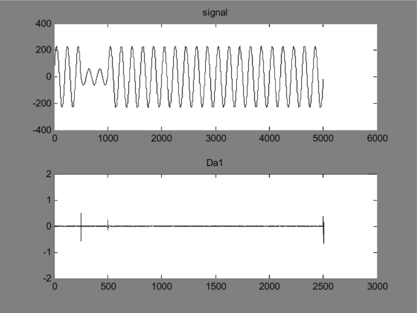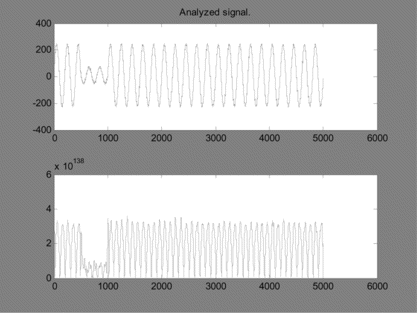Abstract
This article presents an artificial neural network (ANN)-based approach for power quality (PQ) disturbance classification. The input features of the ANN are extracted using S-transform. The features obtained from the S-transform are distinct, understandable, and immune to noise. These features after normalization are given to radial basis function (RBF) neural networks. The data required to develop the network are generated by simulating various faults in a test system. The proposed method requires a lesser number of features and less memory space without losing its original property. The simulation results show that the proposed method is effective and can classify the disturbance signals even under a noisy environment.
The quality of electric power has become an important issue for electric utilities and its customers. As a result, power quality (PQ) studies are gaining interest. Degradation in quality of electric power is normally caused by powerline disturbances such as voltage sag/swell with and without harmonics, momentary interruption, harmonic distortion, flicker, notch, spike, and transients, causing problems such as malfunctions, instabilities, short lifetime, failure of electrical equipments, and so on. In an electric distribution, network faults may cause voltage sag or momentary interruption whereas switching off large load or energization of a large capacitor bank may lead to voltage swell. On the other hand, use of solid-state switching devices and nonlinear and power electronically switched loads such as rectifiers or inverters may cause harmonic distortion and notching in the voltage and current. Use of arc furnaces may lead to flickers. Ferroresonance, transformer energization, or capacitor switching may cause transients and lightning strikes may lead to spikes.
One of the important issues in power quality analysis is to detect and classify disturbance waveforms automatically in an efficient manner. Spectral analysis using discrete Fourier transform (DFT) and fast Fourier transform (FFT) (Lev, Stankovic, and Lin, Citation2000) are the powerful techniques for detecting the stationary signals where the characteristics of the signal do not change with time. For nonstationary signals like power quality disturbance signals, the spectral content changes with time and hence, time-averaged amplitude spectrums found by using DFT and FFT are inadequate to track the changes in the signal magnitude, frequency, or phase.
Wavelet transform (WT) (Gaing, Citation2004) has been proposed to detect the power quality disturbances. In a WT-based method, the signal is analyzed both in time and frequency domains. The wavelet analysis expands the signal in terms of wavelets in the form of translations and dilations of a fixed function called the mother wavelet. For analyzing power quality disturbance signals, Multiresolution analysis (MRA) is used. In MRA, the input signal is decomposed in terms of approximations, provided by scaling functions and details, provided by wavelets. Gaing (Citation2004) has proposed a combined WT and probabilistic network (PNN) approach for disturbance waveform classification. In this approach, energy distributions at 13 decomposition levels of wavelet and time duration of each disturbance are taken as features of the network. A self-organizing learning array system based on WT has been presented in He, Janus, and Starzyk (Citation2006) for the classification of power quality disturbances. The features are obtained by calculating the energy at each decomposition level. Gaouda, Salam, Sultan, and Chikhani (Citation1999) proposed an effective wavelet multiresolution signal decomposition method for analyzing the power quality transient events based on the standard deviation and root mean-square value. Huang and Jou (Citation2004) proposed an arithmetic coding approach based on wavelet packet transform to compress the power quality disturbance data in article. Since noise is omnipresent in a real electrical power distribution network, Yang and Liao (Citation2001) presented a denoising scheme for enhancing a wavelet-based power quality monitoring system. In this scheme, Gaussian white noise is considered and a threshold to eliminate the noise influence is determined adaptively according to the background noise.
Although WT has the capability to extract features from the signal in both time and frequency domain simultaneously and has been applied in the detection and classification of power quality, it exhibits some disadvantages (He, Janus, and Starzyk, Citation2006) like excessive computation, sensitivity to noise level, and the dependency of its accuracy on the chosen basis wavelet.
In this article, S-transform is proposed for the feature extraction. It is an extension to the ideas of wavelet transform and is based on a moving and scalable localizing window and has characteristics superior to other transforms. S-transform can be seen as the “phase correction” of continuous wavelet transform (CWT). This transform has the ability to detect the disturbance correctly in the presence of noise. This ability of the S-transform attracts the researchers for detection and classification of power quality disturbances. The other advantage of S-transform (ST) over wavelet transform is that it avoids the requirement of testing various families of wavelets to identify the best one for the accurate classification. Further, the decomposition of the disturbance signals at different resolution levels is not required in the ST, thereby reducing the memory size and computational overhead. Mishra, Bende, and Ponogragi (Citation2008), has proposed a combined ST and PNN approach for disturbance waveform classification. In this approach, the features of the network are extracted from the frequency and phase contours of the S-matrix of the signal. Lee (Citation2003) has presented S-transform intelligent-based system for classification of power quality disturbance signals in which the change energy and standard deviation calculated from the S-transform of the contour is considered a feature to the network.
Most of the authors have used feedforward neural networks with sigmoidal nonlinearities for model development. The shortcoming of this network is that it takes a long time for training. Also, it has no inherent ability to detect the outliers. In this article, we propose radial basis function (RBF) networks (Dash, Panigrahi, and Panda, Citation2006) to recognize the disturbance waveform. Radial basis function networks take less time for training and the distance-based activation function used in the hidden nodes gives the ability to detect the outliers during estimation.
PROPOSED METHODOLOGY
The proposed methodology for disturbance waveform classification is based on artificial neural network (ANN). The ANN approach for any application involves two stages: network development and actual usage of the network. The various stages involved in the network development are:
data generation | |||||
feature extraction | |||||
data normalization | |||||
network training. | |||||
Generation of the appropriate training data is an important step in the development of ANN models. A large number of training data is generated through an off-line simulation process. Seven types of power quality disturbances, namely, normal, sag, swell, harmonics, transients, outage, and voltage fluctuation are generated. The signal under a noisy environment is generated by adding uniformly distributed Gaussian noise of 30db with the original signal. The features of the input data are extracted by finding the S-transform of the signal and by applying standard statistical techniques to the transformed signal.
During training of the neural network, higher valued input values may tend to suppress the influence of smaller ones. Also, if raw data is directly applied to the network, there is a risk of the simulated neurons reaching the saturated conditions. If the neurons get saturated, then the changes in the input value will produce a very small change in the output value. This affects the network training to a greater extent. To avoid this, the raw data is normalized before the actual application to the neural network. One way to normalize the data x is by using the following expression:
The features after normalization are presented to the RBF neural network for training. After training, the network is tested with the test data to assess the generalization ability of the network. The network is also tested with signals under a noisy environment. The details of S-transform and ANN are given in the subsequent sections.
FEATURE EXTRACTION USING S-TRANSFORM
S-transform (ST) can be seen as the “phase correction” of continuous wavelet transform (CWT). The CWT of a function h(t) is defined as
The ST of a function is defined as the CWT with a specific mother wavelet multiplied by the phase factor
By taking advantage of the efficiency of the FFT and the convolution theorem, the discrete ST can be computed quickly. The ST localizes the phase spectrum as well as the amplitude spectrum. The ST performs multiresolution analysis on a time varying signal as its window width varies inversely with frequency. This gives high time resolution at high frequency and high frequency resolution at low time. Since power quality disturbances make the power signal a nonstationary one, ST can be applied effectively.
In this article, the ST amplitude matrix is used to analyze the power disturbances in which the rows are the frequencies and the columns are the time values. Each row displays the ST amplitude with all frequencies at the same time and each column displays the ST amplitude with time varying from 0 to N − 1 in the same frequency, where n = 0, 1,…, N/2 − 1. The features necessary for power quality disturbances classification are extracted from the S-matrix. Further, from the S-matrix important information in terms of amplitude, frequency, and phase are extracted. Figures show these details for two types of disturbances namely voltage sag and voltage swell.
In Figure , the thick line is the locus of maximum value of the elements present in the column of the S-matrix corresponding to the time. Figure represents the frequency contour of the S-matrix, which gives the complete visualization of the voltage sag. Figure represents the maximum magnitude of each frequency components present in the signal. Similarly Figures 4 to 6 represents the above described characteristics for a voltage swell disturbance.
Standard statistical techniques are applied to extract the features. Many features such as amplitude, slope of the amplitude, time of occurrence, mean, standard deviation, and energy of the transformed signal are widely used for classification (Huang and Jou, Citation2004). In this article, the following features are considered:
-
Energy of the dataset comprising of the elements of maximum magnitude of each row of S-matrix
The Energy of the signal x(n) is given by E = abs{x(n)}2 where abs represents absolute value.
-
Mean of the dataset comprising of the elements of maximum magnitude of each row of S-matrix
The mean of the signal x(n) is mean(x).
-
Peak value
The peak is max(x).
-
Standard deviation which is the square root of variance.
RADIAL BASIS NEURAL NETWORK
The schematic diagram of RBF neural network is shown in Figure . The RBF network (Bendhe, Mistr, and Panigahi, Citation2008) has an input layer, a hidden layer consisting of Gaussian node function, and a set of weights W to connect the hidden layer and output layer. The transfer functions in the nodes are similar to the multivariate Gaussian density function,
The training of RBF is done in three sequential stages. The first stage of the learning consists of determining the unit centers μ j by the k-means clustering algorithm. Next, the unit widths σ j are determined using a heuristic approach that ensures the smoothness and the continuity of the fitted function. The width of any hidden node is taken as the maximum Euclidean distance between the identified centers. Finally, the weights of the second layer connections are determined by linear regression using a least squares objective function.
RBF networks (Lee, Citation2003) can be viewed as an alternative tool for learning in neural networks. While RBF networks exhibit the same properties as back-propagation networks such as generalization ability and robustness, they also have the additional advantage of fast learning and an ability to detect outliers during estimation.
SIMULATION RESULTS
This section presents the details of the ANN-based model developed for disturbance waveform classification. The network shown in Figure was used to generate the data required to develop the neural network. The system was developed in Matlab/Simulink and the various power quality events were simulated in the system.
The power quality disturbances such as sag, swell, transients, harmonics, and outage and voltage fluctuation were generated by creating various faults like single line to ground faults, double line to ground fault, three-phase short circuit fault and harmonic injection. Training samples were obtained from different locations in an attempt to collect samples from different locations. Totally, 3500 samples were generated with 500 samples from each category. The signals were sampled at 256 points/cycle and the normal frequency is 50 Hz.
The ST was applied to the signals to extract the relevant features. The features considered here are energy, standard deviation mean, and variance. Figure shows the signal with sag. The ST of the signal and the wavelet transform of the signal are displayed in Figures and , respectively. From these figures, it is found that, both ST and wavelet transform have the ability to detect the disturbances. Next, the ST and wavelet transform are applied to a signal corrupted with Gaussian noise of 30 db shown in Figure .
From Figures , it is evident that the ST has the ability to detect the presence of disturbances even under noisy environment, whereas the wavelet transform does not possess that capability.
Based on the feature extraction by the ST method, four dimensional feature set for training and testing are constructed. The dimensions here describe the different features derived from the ST. The extracted features were given to the ANN and the network was trained using back-propagation neural network. After training, the network was tested with the test data. The performance of the network during training and testing are given in Table .
TABLE 1 ANN Results Using S-Transform-Based ANN and Wavelet-Based ANN Using RBF
Comparison of ST with Wavelet Transform
For comparison, wavelet transform was applied to extract the features and the extracted features are used to train the network. In wavelet-based ANN, multiresolution analysis technique is used in which the signal is decomposed into eight levels. The same features used in ST are considered here, i.e., energy, mean, standard deviation, and peak value. The feature vector size is 32 (8 × 4), where 8 represent 8 levels. The classification results during training and testing are shown in Table .
From Tables and , it is clear that the S-transform-based RBF neural network gives a better performance than the classification using a Back-propagation algorithm. Similarly, the overall accuracy for the S-transform-based RBF network is 97%, which is higher than that of the training using back-propagation. The details of correctly classified events and the misclassified events using wavelet transform and S-transform are displayed in Table . The diagonal elements represent correctly classified power quality events. The off-diagonal elements represent the misclassification. Seven types of power quality disturbances are taken and are as follows:
-
C1 – Normal
-
C2 – Sag
-
C3 – Swell
-
C4 – Harmonics
-
C5 – Transients
-
C6 – Outage
-
C7 – Voltage fluctuation.
TABLE 2 ANN Results Using S-Transform-Based ANN and Wavelet-Based ANN Using a Back-Propagation Algorithm
TABLE 3 Classification Results of S-Transform-Based ANN
Performance of ANN Under a Noisy Environment
In an electrical power distribution network, the practical data consist of noise. Therefore, the proposed approach has to be analyzed under a noisy environment. The Gaussian noise is widely considered in the research of power quality issues.
The noise is added with the pure signals and operated with S-transform and wavelet transform for feature extraction. Then, with these features, ANN is trained and subsequently tested for automatic classification. Then the performance of the network using the above transforms is compared the noisy environment.
From Tables , it is seen that the S-transform-based RBF network gives a better performance than the wavelet-based method. Similarly, using S-transform-based RBF, the overall accuracy is 96.2% (see Table ) whereas using wavelet transform, the accuracy is 84%. The training time required RBF neural network is less compared to the back-propagation training algorithm. Thus it is clear that the S-transform-based ANN classifier can effectively classify the different kinds of power quality disturbances in the noisy environment.
TABLE 4 ANN Results Using S-Transform-Based ANN and Wavelet-Based ANN Using RBF
TABLE 5 ANN Results Using S-Transform-Based ANN and Wavelet-Based ANN Using a Back-Propagation Algorithm
TABLE 6 Classification Results of Wavelet Transform-Based ANN Using RBF
TABLE 7 Classification Results of S-Transform-Based ANN Using RBF
CONCLUSION
In this article an attempt has been made to extract efficient features of the power quality disturbances using S-transform and classify using RBF neural networks and the results are compared with the training using back-propagation algorithm. The features extracted from the S-transform are very simple and yet very effective. The classification accuracy of the RBF network is very high, even in the presence of noise. The RBF network is quick to train to give 96% classification accuracy. This is quite significant as the classification accuracy of the wavelet multiresolution analysis combined with a neural network is of the order of 84%. Compared to the wavelet transform, the S-transform can be quickly calculated, so that the proposed method is efficient. Moreover, this method shows good scalability and low sensitivity to noise levels.
Notes
Overallaccuracy = 97%.
Overallaccuracy = 84%.
Overallaccuracy = 96.2%.
REFERENCES
- Bendhe , C. N. , S. Mistr , and P. K. Panigahi . 2008 . Detection and classification of power quality disturbances using S-transfom and modular neural network . Electric Power System Research 78 : 122 – 128 .
- Dash , P. K. , B. K. Panigrahi , and G. Panda . 2006 . Power quality analysis using S-transform . IEEE Trans. Power Delivery 18 ( 2 ): 406 – 411 .
- Gaing , Z. L. 2004 . Wavelet based neural network for power disturbance recognition and classification . IEEE Trans. Power Delivery 19 ( 4 ): 1560 – 1568 .
- Gaouda , A. M. , M. M. A. Salam , M. R. Sultan , and A. Y. Chikhani . 1999 . Power quality detection and classification using wavelet multi resolution signal decomposition . IEEE Trans. Power Del. 14 ( 10 ): 1469 – 1476 .
- He , H. , Janus, and A. Starzyk . 2006 . A self organizing learning array system for power quality classification based on wavelet transform . IEEE Trans. Power Delivery 21 ( 1 ): 286 – 294 .
- Huang , S. J. and M. J. Jou . 2004 . Application of arithmetic coding for electric power disturbance data compression with wavelet packet enhancement . IEEE Trans. Power System 19 ( 4 ): 1334 – 1341 .
- Lee , I. W. C. 2003 . S-transform based intelligent system for classification of power quality disturbance signals . IEEE Trans. Industrial Electronics 50 : 800 – 805 .
- Lev , H. , A. M. Stankovic , and S. Lin . 2000 . Application of staggered under sampling to power quality monitoring . IEEE Trans. Power Delivery 15 ( 3 ): 1750 – 1756 .
- Mishra , S. , C. N. Bende , and B. K. Ponogragi . 2008 . Detection and classification of power quality disturbances using S-transform and probabilistic neural networks . IEEE Trans. Power Delivery 23 ( 1 ): 280 – 287 .
- Yang , H. T. and C.-C. Liao . 2001 . A de-noising scheme for enhancing wavelet based power quality monitoring system . IEEE Trans. Power Del. 16 ( 7 ): 353 – 360 .

